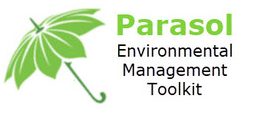Implementing an Environmental Management Toolkit is a proactive step toward improving environmental performance and sustainability within an organization. However, to ensure its effectiveness and make informed decisions, it is essential to measure the success of the toolkit implementation. In this blog post, we will discuss key indicators and methodologies for evaluating the effectiveness of an Environmental Management Toolkit and how it contributes to achieving environmental goals.
Key Performance Indicators (KPIs)
Establishing relevant Key Performance Indicators is crucial for assessing the effectiveness of an Environmental Management Toolkit. This blog post will explore different types of KPIs, including environmental, operational, and financial metrics. It will discuss the importance of aligning KPIs with the organization’s sustainability objectives, such as energy consumption, waste reduction, water usage, emissions, and cost savings. The blog will highlight how tracking and analyzing KPIs provide valuable insights into the overall environmental performance and the impact of the toolkit.
Compliance and Regulatory Requirements
Evaluating compliance with environmental regulations is a critical aspect of measuring the success of an Environmental Management Toolkit. This blog will discuss the importance of monitoring regulatory compliance, including permits, reporting obligations, and adherence to environmental standards. It will explore how the toolkit enables organizations to track and document compliance efforts, reducing the risk of non-compliance penalties and legal issues. The blog will emphasize the significance of maintaining a robust compliance record as a measure of the toolkit’s effectiveness.
Employee Engagement and Participation
The level of employee engagement and participation is an essential factor in evaluating the success of an Environmental Management Toolkit. This blog post will discuss the importance of assessing the organization’s culture of sustainability, employee awareness, and involvement in environmental initiatives. It will explore how the toolkit facilitates employee engagement through training programs, communication channels, and recognition systems. The blog will highlight the correlation between high employee engagement and the effective utilization of the toolkit’s resources and tools.
Continuous Improvement and Adaptability
An effective Environmental Management Toolkit should support a culture of continuous improvement and adaptability. This blog will discuss the importance of evaluating the organization’s ability to implement changes and make improvements based on the toolkit’s recommendations and feedback. It will explore how the toolkit fosters a learning environment, encourages innovation, and facilitates the implementation of best practices. The blog will emphasize the significance of monitoring the organization’s adaptability to measure the toolkit’s effectiveness in driving positive change.
Stakeholder Perception and Feedback
Assessing stakeholder perception and feedback is a valuable component of evaluating the effectiveness of an Environmental Management Toolkit. This blog post will discuss the importance of gathering input from various stakeholders, including customers, employees, investors, and local communities. It will explore methods such as surveys, interviews, and focus groups to collect feedback on the organization’s environmental initiatives and the impact of the toolkit. The blog will highlight how positive stakeholder perception and feedback reflect the successful implementation of the toolkit and its contributions to environmental sustainability.
Conclusion
Measuring the effectiveness of an Environmental Management Toolkit is essential to assess its impact on environmental performance and sustainability goals. By establishing relevant Key Performance Indicators, evaluating compliance with regulations, assessing employee engagement, fostering continuous improvement, and considering stakeholder perception, organizations can gauge the success of the toolkit implementation. This evaluation process enables organizations to identify areas for improvement, track progress, and make informed decisions to enhance their environmental management practices. Ultimately, the evaluation of an Environmental Management Toolkit ensures that it continues to drive positive change and contribute to a greener and more sustainable future.



